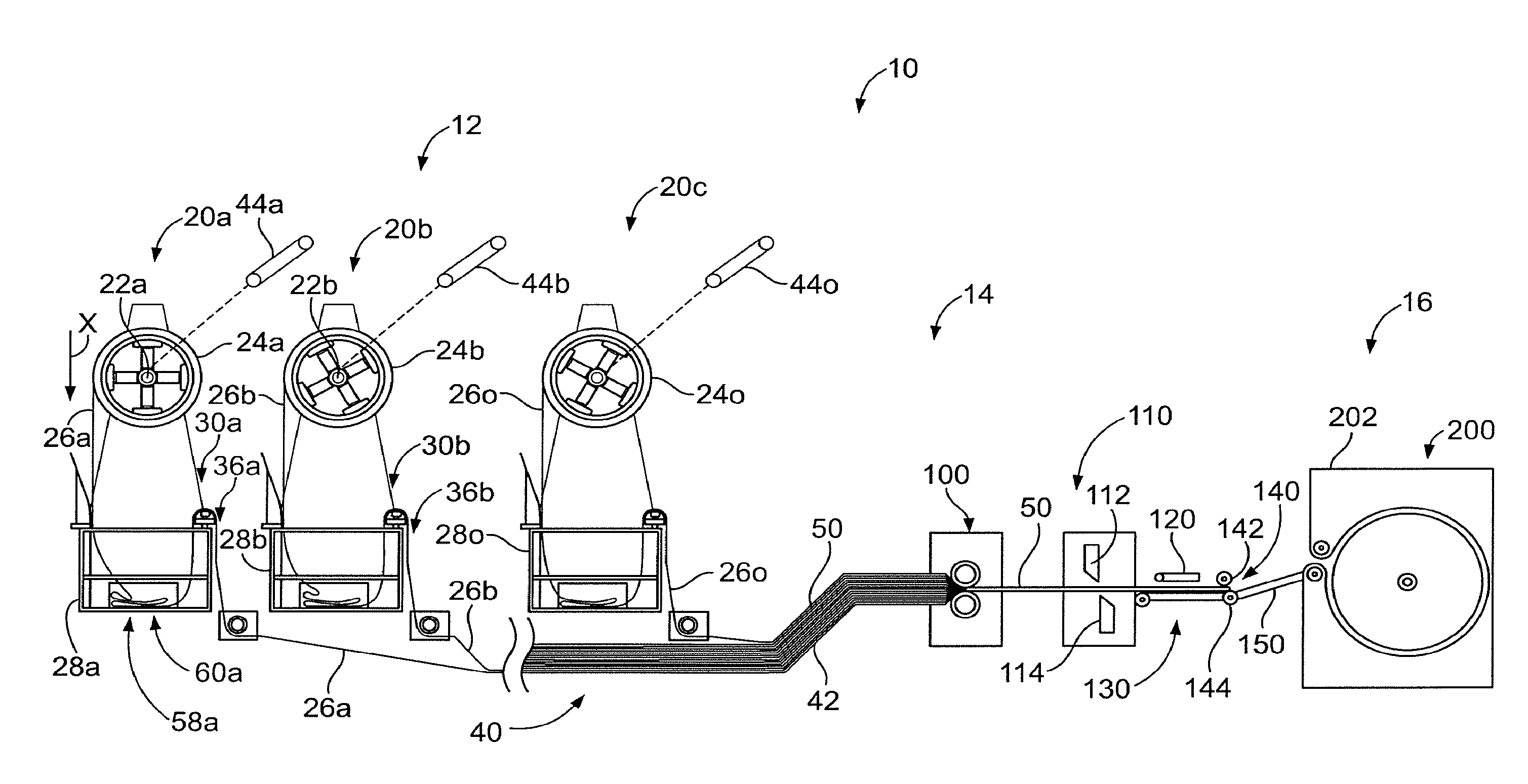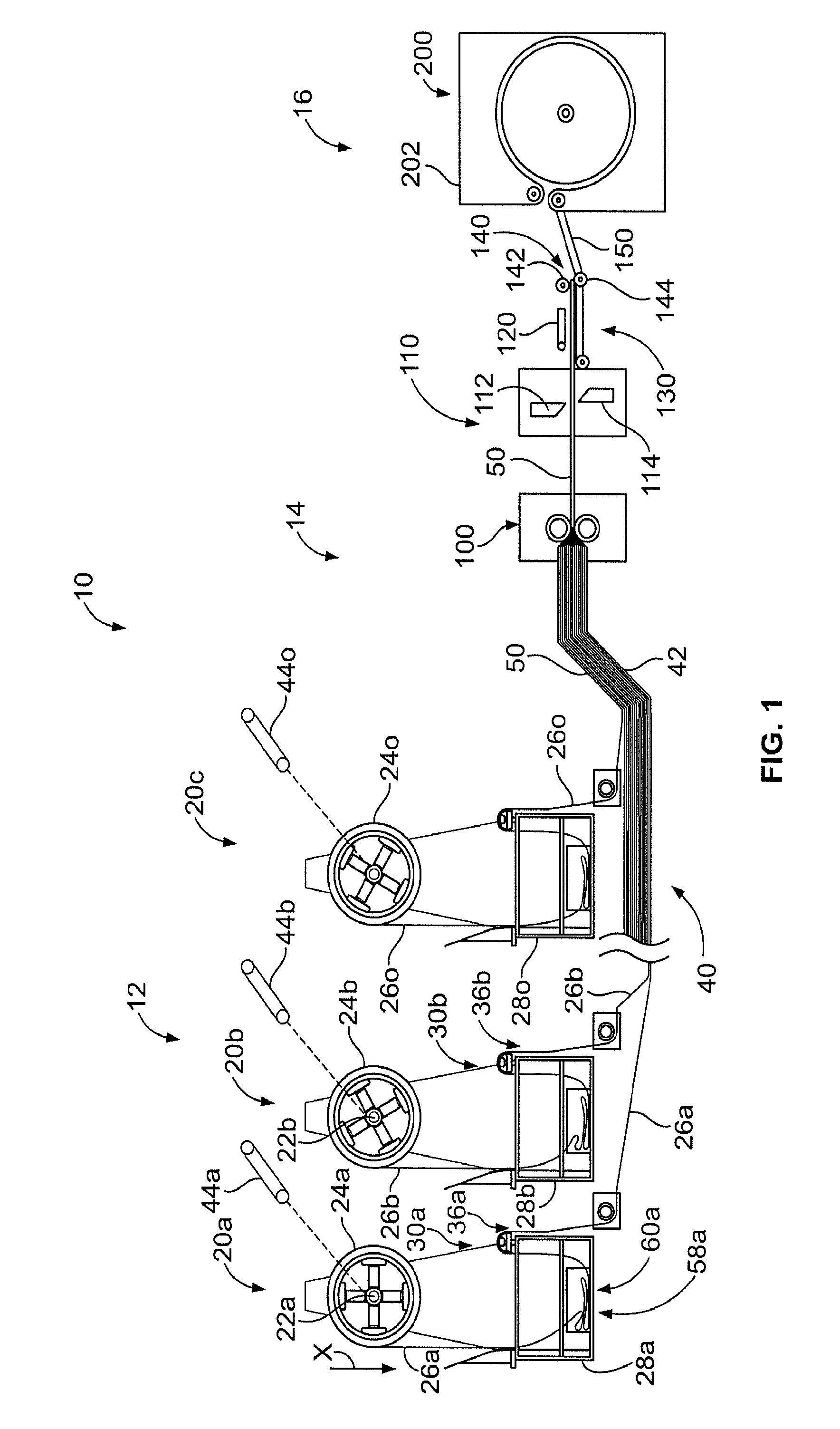Method and apparatus for making amorphous metal transformer cores
a technology of transformer cores and metal strips, applied in the field of transformer cores, can solve the problems of amorphous metal strips, heat generation, and transformer losses, and achieve the effects of reducing the number of transformer cores, and improving the quality of transformer cores
- Summary
- Abstract
- Description
- Claims
- Application Information
AI Technical Summary
Benefits of technology
Problems solved by technology
Method used
Image
Examples
Embodiment Construction
[0055]FIG. 1 illustrates a schematic side elevation view of an apparatus 10 used for processing a transformer core of amorphous metal strips in accordance with one aspect of the presently disclosed methods and systems. As will be described in greater detail below, the disclosed apparatus 10 may be used to assemble and process a stack or grouping of a plurality of amorphous strips, such as the grouping or stack of amorphous metallic strips 400 as illustrated in FIGS. 20 and 21.
[0056]As illustrated, the apparatus 10 comprises essentially three processing sections: an unwinding section 12, a shearing section 14, and a core winding section 16. In this illustrated embodiment of apparatus 10, the unwinding section 12 preferably comprises a plurality of uncoilers 20(a-o), a plurality of spools 24(a-o), and a common strip collection tray 40. In one preferred arrangement, this common strip collection tray 40 begins at the first uncoiler 20a and ends with a ramp 42 that allows a composite str...
PUM
| Property | Measurement | Unit |
|---|---|---|
| thickness | aaaaa | aaaaa |
| thickness | aaaaa | aaaaa |
| temperatures | aaaaa | aaaaa |
Abstract
Description
Claims
Application Information
 Login to View More
Login to View More - R&D
- Intellectual Property
- Life Sciences
- Materials
- Tech Scout
- Unparalleled Data Quality
- Higher Quality Content
- 60% Fewer Hallucinations
Browse by: Latest US Patents, China's latest patents, Technical Efficacy Thesaurus, Application Domain, Technology Topic, Popular Technical Reports.
© 2025 PatSnap. All rights reserved.Legal|Privacy policy|Modern Slavery Act Transparency Statement|Sitemap|About US| Contact US: help@patsnap.com



